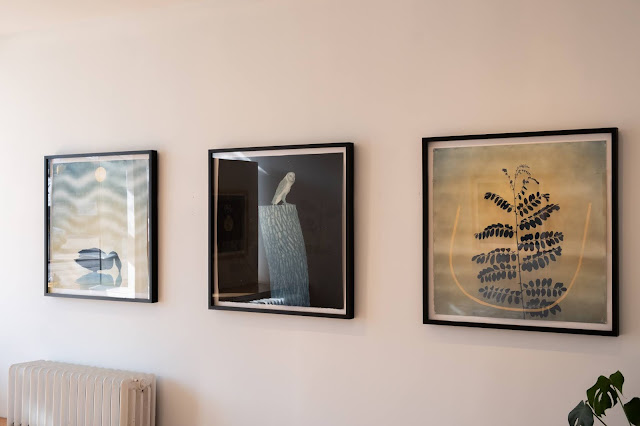We are pleased to present A Space Between, Anne Griffith’s first solo exhibition at Dianna Witte Gallery. We first featured Griffith’s work in Summer Forecast, a group show curated by Tatum Dooley, in 2019.
'Now I am traversed by bridle paths, under the seal of sun and shade...I live in great density...Shelter lures me. I slump down into the thick foliage...In the forest, I am my entire self. Everything is possible in my heart just as it is in the hiding places in ravines. Thickly wooded distance separates me from moral codes and cities.” Rene Ménard.
Painting is often obsessed with labels: abstraction, minimalism, landscape, impressionist, modernist, and so on. But what about the paintings that don’t fit the confines of art speak jargon? To me, these are the best paintings, ones that defy easy categorization; that are contemporary in their condensation of the past into something distinct. This, in a nutshell, is what makes Anne Griffiths’s paintings so great—they seamlessly shift from landscapes to abstractions, from modernism to impressionism. Griffiths’s painterly influences vary: the brushstrokes resemble those of Clyfford Still, the slivers of raw canvas invoke David Milne, while the intuitiveness of Griffiths’s way of working reminds one of Peter Doig. What emerges is a distinct style of her own, one which articulates the landscapes of Canada with a contemporary lens.
Most of Griffiths’s canvases are painted in tertiary colours—shades within the same section of the colour wheel. The use of colour connotes the weather, season, and feeling of the landscape on any given day. A surprising jolt of colour often interrupts the limited palette —a strike of black, yellow, or blue, surprises the eye. The delight of a familiar landscape interrupted.
Griffiths draws with her paint strokes. The marks are visible, connecting the viewer to the process. The oil paint becomes lifelike in its visibility—visceral. The marks guide the viewer’s eyes. Pay attention to the direction of the paint strokes, how they provide contextual information. The paintings with vertical lines feel like a curtain of rain or forest tapestry. While the combination of vertical and horizontal strokes differentiate the horizon line, making the viewer feel like they’re walking through a forest. The thatch-like strokes resemble a nest—the ultimate metaphor for a feeling of home within nature. When divorced from the knowledge of the context the paintings were made (in the forests of British Columbia, where Griffiths resides), the paintings have the potential to become living organisms looked at under a microscope.
“These trees are magnificent, but even more magnificent is the sublime and moving space between them, as though with their growth it too increased,” wrote Rilke. In other words, forests have the ability to expand and contract. One can feel small and insignificant while standing amongst trees, and at the same time deeply connected to the earth and the past. The forest seems as if it could go on forever, and yet there are multiple exit points. Griffiths captures this feeling, condensing a walk through a forest into one image which simultaneously feels finite and infinite.
EXHIBITION ARTWORKS



































